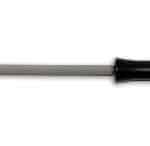
Chicken sausage seems like a healthy choice, right? Well, fat content varies quite a bit from brand to brand. To find a lean option, read nutrition labels closely. Look for sausages with 10 grams of fat or less per serving. Opt for low-sodium varieties too. The leanest choices use chicken breast, not fatty dark meat. With mindful picking, chicken sausage can still be a tasty, protein-packed part of a balanced diet. Keep an eye on portions though, as calories add up fast!
Key Takeaway
- Chicken sausage usually has 7 to 10 grams of fat per serving.
- Ingredients used can change how much fat is in the sausage.
- Always check the label to see the full fat and sodium content.
How to Make Your Own Chicken Sausage at Home
Making chicken sausage at home is simpler than you might think, and it lets you control the ingredients. By using lean cuts of chicken, you can make a healthier version without all the additives and preservatives that are often found in store-bought options. Here’s how you can do it:
- Pick Your Chicken: Choose lean cuts like chicken breast. Avoid dark meat or skin to keep the fat content low.
- Season It Right: Add your favorite herbs and spices—think garlic, fennel, paprika, or even chili flakes if you like a kick. You can also add some fresh herbs like parsley or basil.
- Grind It: You’ll need a meat grinder, which you can either buy or borrow. If you don’t have one, many stores will grind the meat for you.
- Stuff It: If you’re using casings, stuff the sausage mixture into them. If you don’t want to deal with casings, you can make patties instead.
- Cook It: Grill or pan-fry your sausages, making sure they reach an internal temperature of 165°F for safety.
Homemade chicken sausage can be a fun project and gives you a healthier, customizable option.(1) Plus, you get to experiment with flavors that you may not find in store-bought varieties. It’s a great way to enjoy a healthier, lower-fat sausage while knowing exactly what’s in it.
Health Risks of High Sodium and Fat Intake

Credits: CNA insider
While chicken sausage is a leaner choice compared to pork or beef sausages, it’s still important to be mindful of sodium and fat intake. Both of these can have a negative impact on health if consumed in large amounts. Here’s why:
- Sodium: Too much sodium can lead to high blood pressure, which increases the risk of heart disease and stroke. Many store-bought chicken sausages contain added salt for flavor, which can quickly push your daily intake over the recommended limit.
- Fat: Even though chicken sausage is lower in fat than other sausages, some varieties can still be high in unhealthy fats. Eating too much saturated fat can raise cholesterol levels, which in turn increases the risk of heart disease.
To keep things in check, it’s a good idea to:
- Choose low-sodium chicken sausages, or make your own at home.
- Pay attention to serving sizes to avoid consuming too much fat in one sitting.
By keeping sodium and fat levels under control, chicken sausage can remain a healthy option in your diet without putting your long-term health at risk.
Different Flavors and Varieties of Chicken Sausage
Chicken sausage comes in many flavors, from spicy to sweet, and everything in between. But it’s important to know that these flavor variations can affect the overall nutritional profile. Some sausages may have added sugar, oils, or extra fat to enhance the taste, which can increase their calorie count.
Here are some popular types of chicken sausage and what to look for:
- Italian: This is one of the most common types. It’s often packed with herbs like fennel and garlic. Some varieties can be high in sodium, so check the label before buying.
- Apple: This sweeter option can be a great choice if you prefer a milder taste. But beware—some apple-flavored sausages may contain added sugar, so always review the ingredients.
- Spicy: If you like a little heat, spicy chicken sausage is a great option. These sausages usually contain chili flakes or peppers, adding flavor without much extra fat.
When shopping for chicken sausage, always check the nutrition label.(2) Some sausages are leaner than others, and they often come with different seasoning blends or extra ingredients. Whether you go for sweet, savory, or spicy, just make sure the flavor doesn’t come at the cost of your health goals.
Chicken Sausage as Part of a Balanced Diet
Chicken sausage can be a great addition to a balanced diet, but it’s all about how you pair it with other foods. To make sure your meal is healthy and fulfilling, think about your side dishes and portion sizes.
Here’s how to build a balanced meal:
- Pair with Vegetables: A side of roasted or sautéed vegetables can add fiber and nutrients to your meal, helping to balance out the sodium and fat content in the sausage.
- Add Whole Grains: Whole grains like quinoa, brown rice, or whole-wheat pasta provide extra fiber and keep you feeling fuller for longer.
- Control Portions: Even though chicken sausage is leaner than pork or beef, it’s still important to watch your portions. Keep an eye on serving sizes to avoid overdoing it on calories.
A healthy plate could look something like a grilled chicken sausage with a side of roasted Brussels sprouts and a small serving of quinoa. This combination gives you protein, fiber, and healthy fats, making for a well-rounded, satisfying meal.
By being mindful of what you pair with your chicken sausage, you can easily incorporate it into a healthy and balanced diet.
Chicken Sausage vs. Other Lean Protein Sources
When it comes to lean protein, chicken sausage is a solid option, but it’s not the only one. There are other lean protein sources that may be lower in fat or sodium, so it’s good to mix things up. Here’s how chicken sausage compares to some other lean protein options:
- Turkey Sausage: Often even leaner than chicken sausage, turkey sausage is a good alternative if you’re watching your fat intake. It’s also a great source of protein but can be higher in sodium, depending on the brand.
- Fish: Fish, especially fatty fish like salmon or mackerel, is high in healthy omega-3 fatty acids. While it’s not exactly like sausage, it can provide similar protein content without the added fats found in processed meats.
- Tofu or Tempeh: For plant-based eaters, tofu and tempeh are excellent protein sources. They’re both low in fat and rich in other nutrients like iron and calcium.
While chicken sausage is a healthier choice compared to pork or beef sausage, it’s smart to balance it out with other lean protein sources like turkey, fish, or plant-based options. This way, you ensure you’re getting a variety of nutrients and avoiding too much sodium or saturated fat.
Conclusion
In summary, chicken sausage tends to be lower in fat than other types of sausage, with around 7-10 grams of fat per serving typically. However, the exact amount can vary depending on factors like ingredients used and production methods. It’s important to read nutrition labels, as some brands may be leaner than others. While not as low-fat as plain chicken breast, chicken sausage can still fit into a balanced diet when consumed in moderation. Checking the fat and sodium content on labels helps choose the healthiest option. So for those looking for a tasty, lower-fat alternative to pork or beef sausage, chicken sausage is worth a try.
FAQ
How Many Calories Are in a Chicken Sausage Serving?
Understanding the calories per serving is key for anyone tracking their diet. A typical sausage link varies in calories depending on the type – whether it’s sweet italian chicken sausage or breakfast sausage. Most chicken sausage options range between 100-180 calories per serving. Check the nutrition facts label for the exact calorie breakdown, which helps you manage your calorie diet effectively.
What’s the Fat Content in Chicken Sausage?
Total fat in chicken sausage differs based on the recipe. Some varieties have less fat than USDA standard meat products. A single sausage link might contain 5-10 grams of total fat, with saturated fat being a smaller portion. Ground turkey or chicken sausage often provides a leaner option compared to pork and beef sausage. Always review the nutrition facts to understand the fat content for your specific sausage choice.
How Can Chicken Sausage Support Weight Loss?
Chicken sausage can be a good source of protein while being lower in calories compared to traditional sausages. The key is choosing options like thin ‘n trim or reduced sodium varieties. A serving typically offers 10-15 grams of protein, which can help support weight loss by keeping you feeling full. Pair it with vegetables and monitor your serving size to align with your calorie diet goals.
What Nutritional Benefits Does Chicken Sausage Provide?
Chicken sausage offers more than just protein. It’s a good source of essential nutrients like vitamin B6 and vitamin B12. These vitamins support metabolism and brain health. Natural flavors and sometimes natural hog casings make these sausages appealing. When cooking, use a meat thermometer to reach the recommended internal temperature, ensuring both safety and optimal nutritional value.
How Should I Cook Chicken Sausage?
Cooking chicken sausage is simple. Start by preheating your pan to medium temperature. Whether it’s hot italian, sweet italian, or apple sausage, aim for that golden brown exterior. Cook sausage links until they reach the minimum internal temperature of 165°F. Use a meat thermometer for accuracy. You can grill, pan-fry, or bake them. Serve and enjoy with your favorite sides!
What Should I Look for When Buying Chicken Sausage?
When shopping, check the nutrition facts label. Look at calories from fat, daily values, net carbs, and total carbohydrates. Brands like Premio Foods offer various options such as italian chicken sausage or breakfast sausage. Consider the source of protein and recommended daily intake. Compare labels to find sausages that align with your dietary needs, whether you’re seeking low-fat or high-protein options.
References
- https://www.recipal.com/ingredients/45044-nutrition-facts-calories-protein-carbs-fat-chicken-sausage
- https://isernio.com/about-isernios/nutritional-information/
Related Articles
- https://milkwoodrestaurant.com/chicken-sausage-nutrition/
- https://milkwoodrestaurant.com/chicken-sausage-a-low-fat-option-for-a-healthy-diet/
- https://milkwoodrestaurant.com/most-healthy-chicken-sausage-2/
Was this helpful?

I’m Mary R. Q. , a seasoned professional chef dedicated to elevating home cooking experiences. Through my expertise in the culinary arts, I provide practical cooking tips and insightful reviews of kitchen utensils on my blog, milkwoodrestaurant.com. As a passionate advocate for transforming everyday meals into extraordinary culinary adventures, I aim to empower home cooks with the knowledge and tools they need to create delicious and memorable dishes. I’m also an author of the book “1,001 Kitchen Tips & Tricks: Helpful Hints for Cooking, Baking, and Cleaning (1,001 Tips & Tricks)” which is sold on Amazon. Join me on a flavorful journey as we explore the art of cooking and the essential tools that make it a joy.








